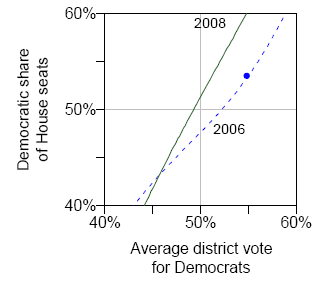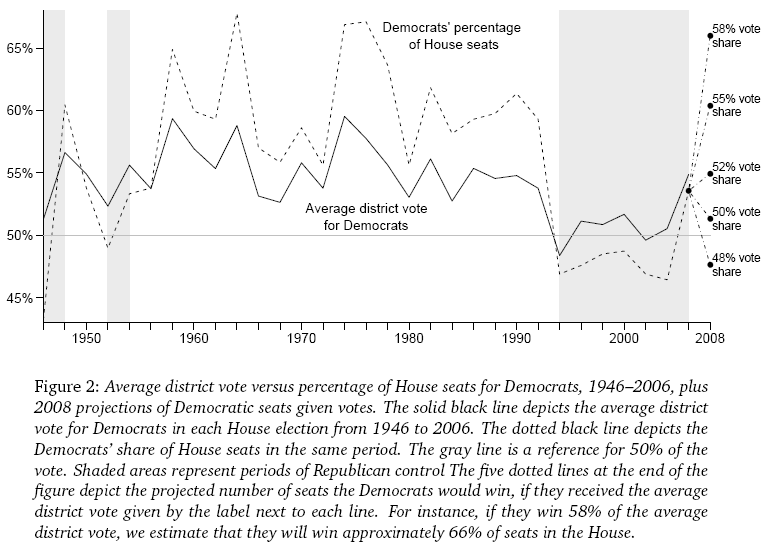Here’s the new paper by John Kastellec, Jamie Chander, and myself, and here’s the abstract:
This paper predicts the seats-votes curve for the 2008 U.S House elections. We document how the electoral playing field has shifted from a Republican advantage between 1996 and 2004 to a Democratic tilt today. Due to the shift in incumbency advantage from the Republicans to the Democrats, compounded by a greater number of retirements among Republican members, we show that the Democrats now enjoy a partisan bias, and can expect to win more seats than votes for the first time since 1992. While this bias is not as large as the advantage the Republicans held in 2006, it is likely to help the Democrats win more seats than votes and thus expand their majority.
Here are our estimated seats-votes curves for 2006 and 2008:

As you can see, there used to be a strong Republican bias; now we estimate a Democratic bias. The change comes from the incumbency advantage (which we estimate to be about 8%, on average), which tends to lock in party control except in big swing years such as 1994 and 2006.
And here are some possibilities for 2008 in historical perspective:

The paper is a sequel to this article about the 2006 election.
Hi Andrew
Fascinating.
I'd like to diary about this on dailyKos…. what's the citation for the article?
Peter
Peter,
We submitted the article to a special issue of a political science journal. For now, I think the link and "Technical Report, Department of Political Science, Columbia University," will do. The earlier article was published in the journal PS.
That second figure is interesting.
Andrew, I'm curious, what do you think of the conventional wisdom that Obama helps add seats to the house in November?